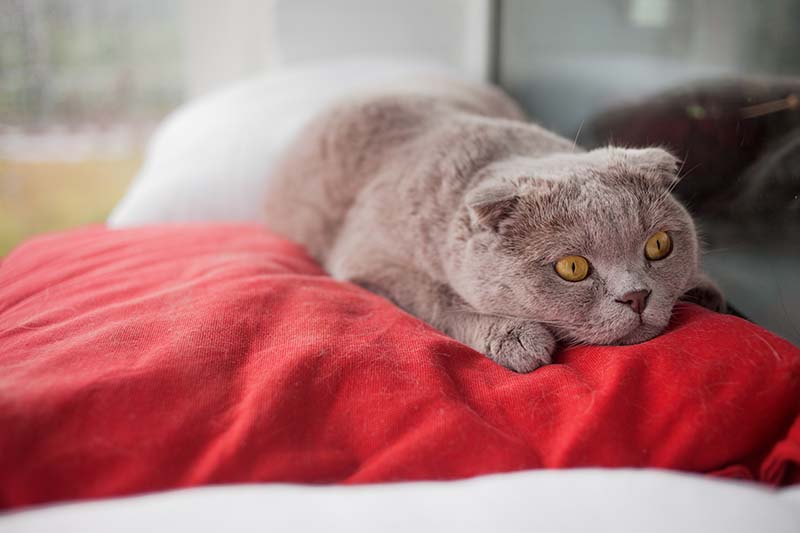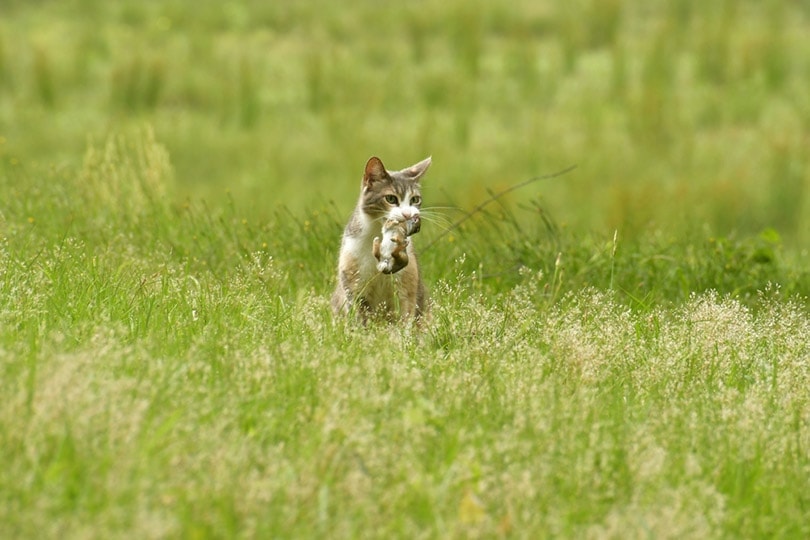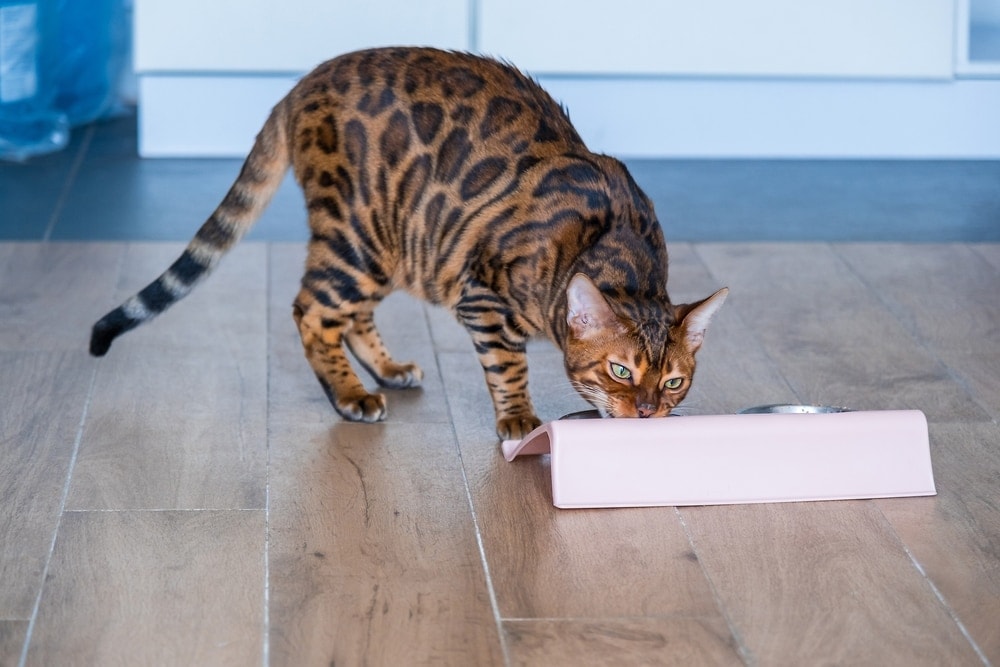How to Protect Leather Furniture From Cats: 7 Useful Tips & Tricks
Updated on
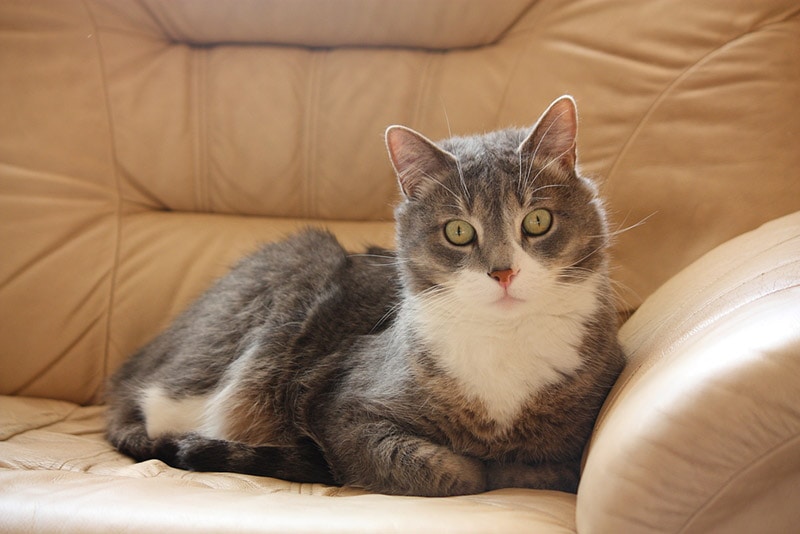
Cats and leather furniture don’t always mix well, especially if the cat is rambunctious, curious, and playful. Elderly cats might not pose much of a danger, but kittens and adults in their prime are bound to cause some type of damage to the leather furniture at some point. Fortunately, there are a few things that you can do if you have leather furniture that you want to protect. Here are seven effective options to consider.
The 7 Tips & Tricks for Protecting Leather Furniture From Cats
1. Utilize Scratch Guards
Scratch guards are designed to be attached to leather furniture (and other types) so your cat’s sharp nails won’t damage the surface. The scratch guards are usually attached via double-sided tape and can be placed anywhere on your couch where your cat tends to focus their attention. The arms and backrests are popular areas. Once the scratch guards have been scratched up, you can simply remove them and replace them with new ones as necessary.
2. Make Plenty of Scratching Furniture Available
An easy way to protect your leather furniture from your kitty is to redirect their attention to other things that they can scratch and lounge on. Scratching posts, pads, and playhouses are all great options. Make sure at least one scratching post or another type of scratching furniture is located next to your couch, so your kitty can feel like they are part of the family while hanging out during movie night.
3. Incorporate Stylish Couch Covers Into Your Design
If you can’t keep your cat off your leather furniture and multiple areas are at risk of getting damaged, consider investing in a high-quality couch and chair cover for extra protection. The covers can be put on your furniture for daily use and then taken off when the company comes over. There are many stylish options available with modern designs and colors to complement just about any home décor.
4. Keep Your Cat’s Nails Trimmed
Your cat can only cause so much damage if their nails are trimmed and filed, as they won’t be sharp enough to poke holes into the leather. This is especially helpful for cats who don’t necessarily like to scratch and dig but do like to jump on your furniture. You can trim your cat’s nails yourself, then use a nail filer to gently dull the tips afterward, or have a groomer handle the task for you. Your cat’s nails should be trimmed whenever they start to get sharp again.
Keeping your cat's nails trimmed can help you protect your home from scratching damage. With a great set of clippers like our Hepper Cat Nail Clipper Set, you'll be able to easily and safely trim your cat's claws whenever you need to. This set includes two pairs of clippers, both with stainless steel blades, safety guards, and locking switches. You'll also get a built-in nail file and a pouch for easy storage.
5. Spray Your Leather Furniture With Deterrents
Cats have an excellent sense of smell, and there are a few scents that we typically enjoy but that they dislike. Spraying your leather furniture with a scent deterrent should help keep your cat off your leather furniture altogether. Disliked scents include:
- Lavender
- Lemon
- Rosemary
- Orange
- Eucalyptus
There are many cat-safe scent deterrents available. Before you start spraying your furniture all over, spray a small area to check that it won’t stain. Spraying the furniture once or twice a day should be enough to deter your kitty.
6. Make Sure Your Cat Gets Plenty of Exercise
A cat that’s full of pent-up energy is likely to ruin your leather furniture. If your cat has been exercised and feels content, they are more likely to just lie on the furniture rather than play on it and scratch it up. Therefore, it is a good idea to spend a few minutes each morning and afternoon playing ball and engaging in other physical activities with your cat. This should help keep their energy levels manageable throughout the day.
7. Consider Buying a Piece of Furniture Just for Your Cat
Consider getting your cat their own cozy loveseat or lounge chair to hang out in. Make the furniture attractive to them by placing a cozy pillow in it, and maybe even sewing a piece of leather on it if your cat seems to enjoy the feel and texture of that material. Encourage your cat to spend time on their furniture by giving them treats whenever they get on it. Discourage them from getting on your leather furniture by moving them off every time they try to get on it.
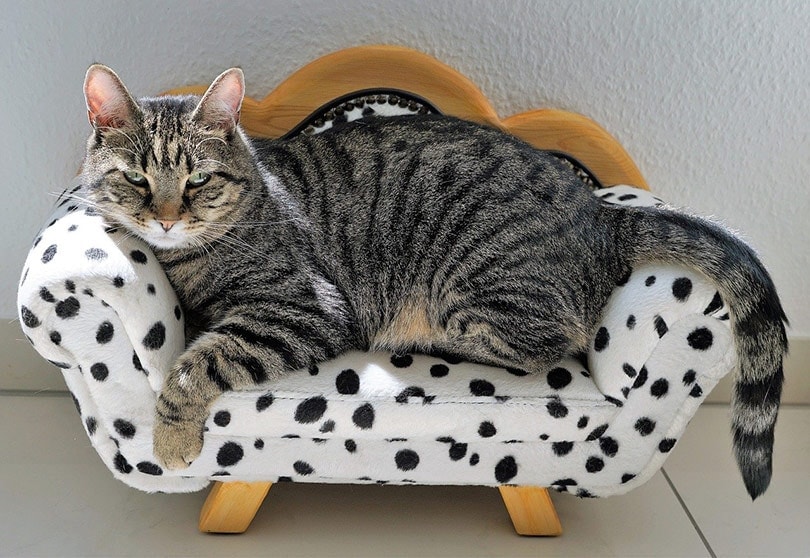
Conclusion
You should not have to avoid leather furniture because of your cat or consider getting rid of your cat just to protect your furniture. There are many different things that you can do to keep your furniture in good shape as time goes on, though you may have to use more than one solution to get the results that you want.
Featured Image Credit: Anastasija Popova, Shutterstock


